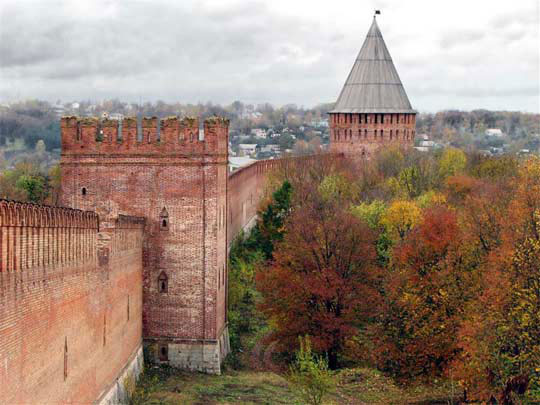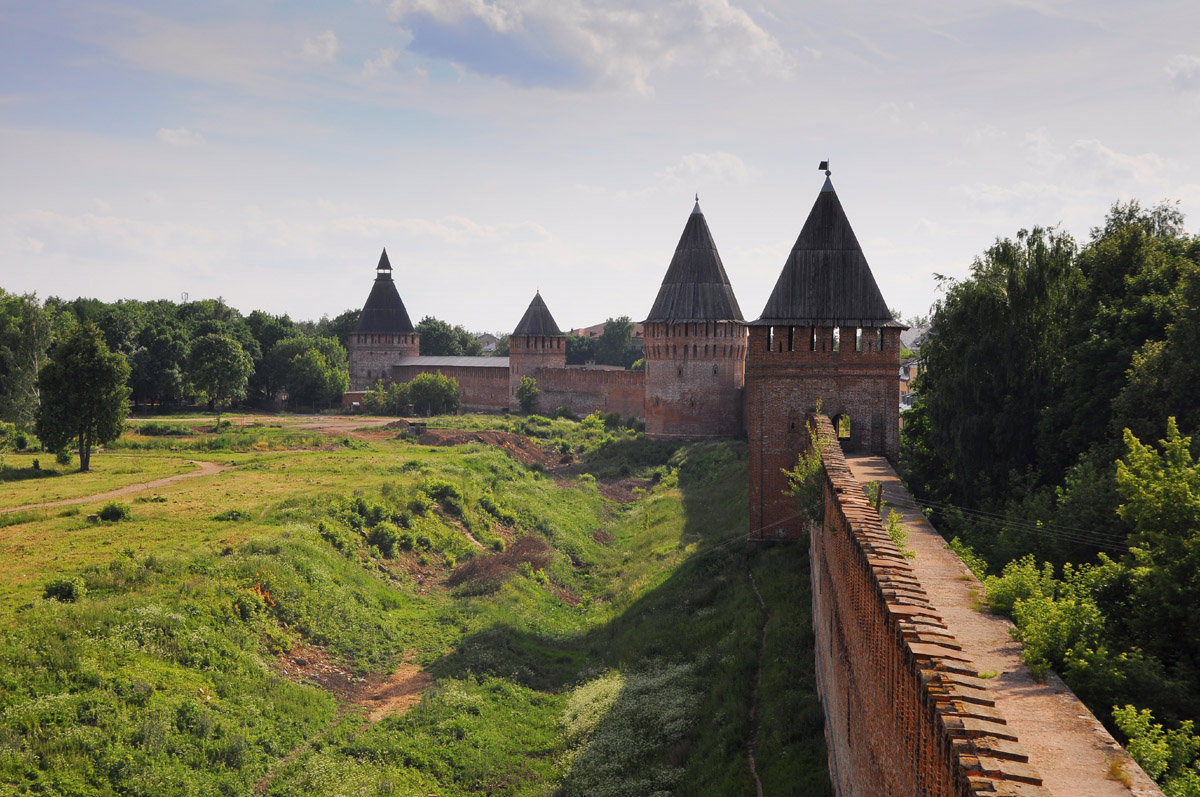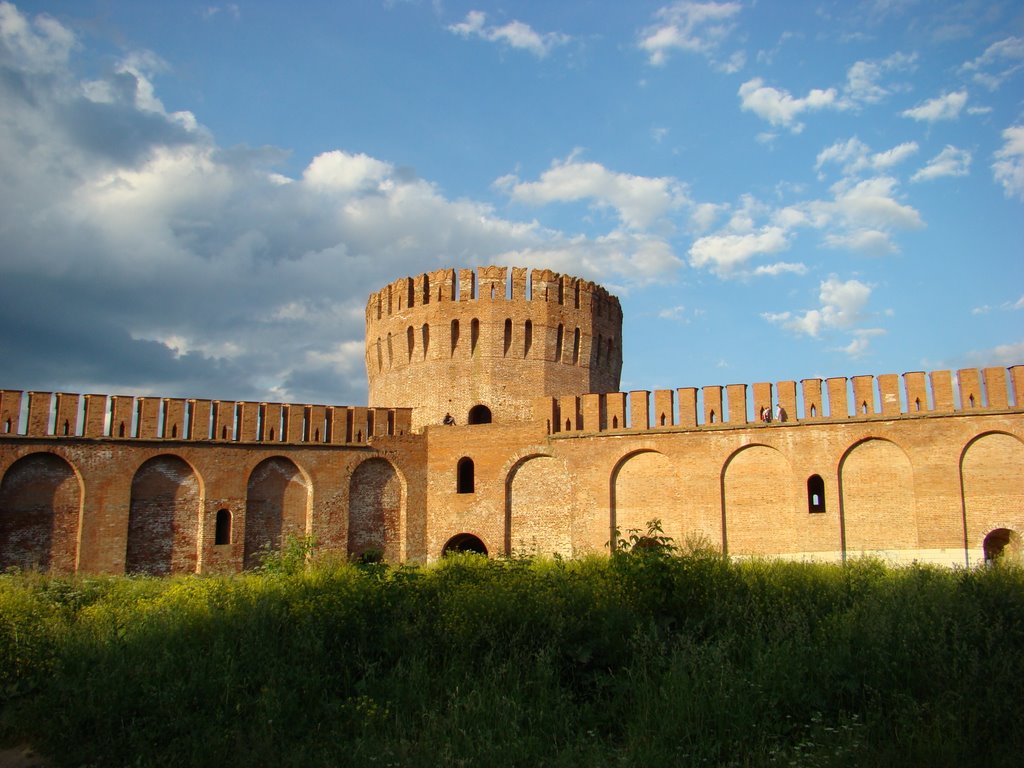Smolensk Kremlin is a kremlin (a fortress) enclosing the center of the city of Smolensk in western part of Russia. The partially preserved fortress wall was built between 1595 and 1602, during the reign of Tsars Fyodor I Ioannovich and Boris Godunov. The length of the walls is about 6.5 kilometres (4.0 mi), of which less than the half was preserved. The fortifications were built under supervision of the architect Fyodor Kon. The Smolensk Kremlin is classified as an architectural monument protected at the federal level, and also has a great historical significance, in particular, as the fortress protecting the Russian state from the west over centuries.
Smolensk historically had a great significance for the defence, and this is why Russian rulers paid considerable attention for its fortifications. In the spring of 1554, Tsar Ivan the Terrible ordered to build a new tall wooden fortress. After the development of artillery, it became clear that a wooden fortress was no longer suitable for the defence, and in the end of the 16th century it was decided to build a new stone fortress at the place of the old one.
In December 1595, the preparations for the construction started after the official decree was issued. The construction works were very intense and were performed daily from sunrise to sunset. The construction workers, however, lived in harsh conditions, and revolted in 1599 because of hunger, cold, and diseases. In the summer of 1597 long and heavy rains flooded all the trenches and ditches, and the construction workers had to strengthen the landslide soil by piles. In 1600, because of the heat and heavy rains, a large amount of crops was lost in Russia, causing the famine.
The construction of the new fortress used the old existing fortifications, so that in some places the wall was built on top of them, and in certain areas the new fortress was extended beyond the limits set by the old one. . The construction started from the western side of the fortress.












